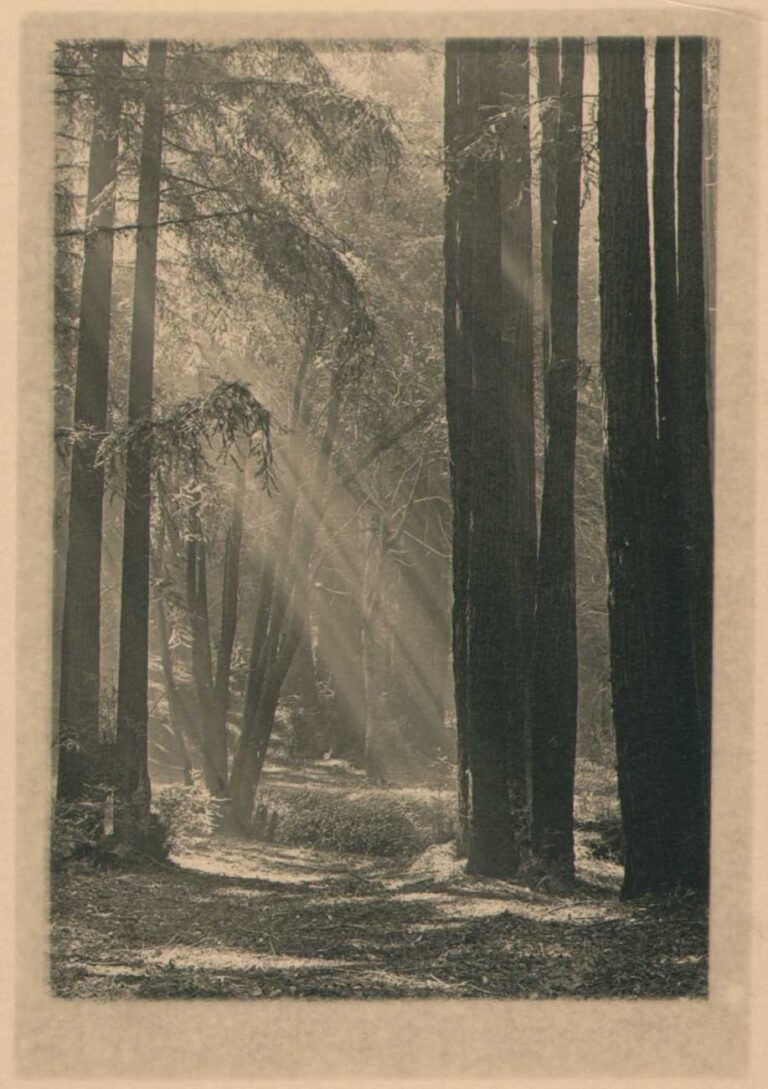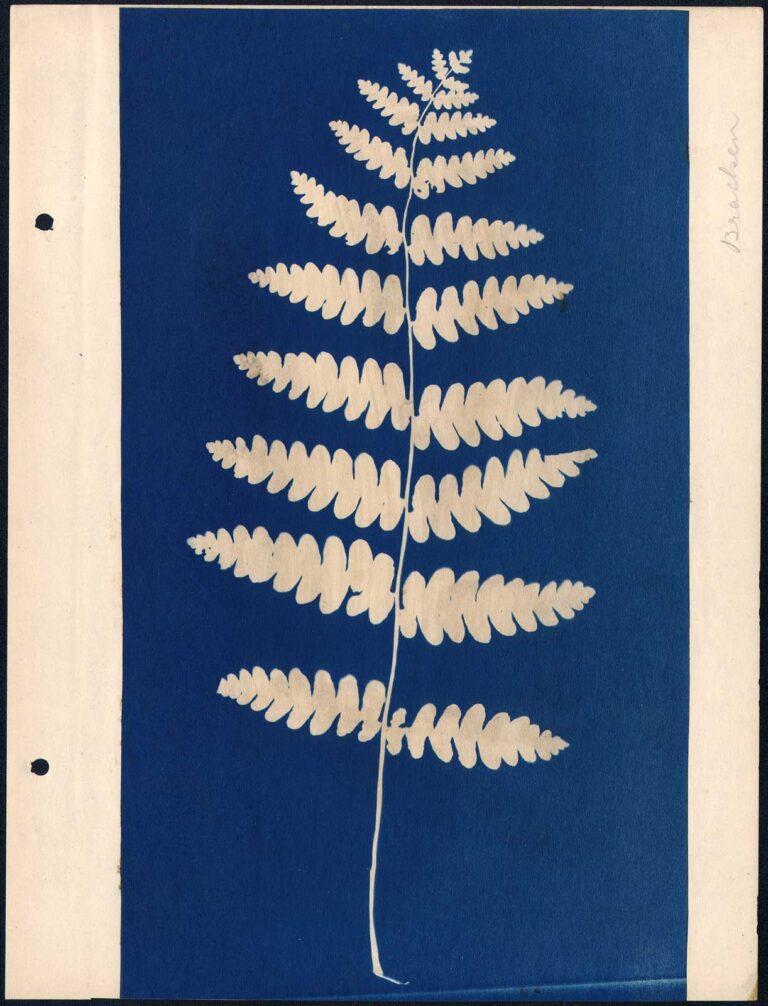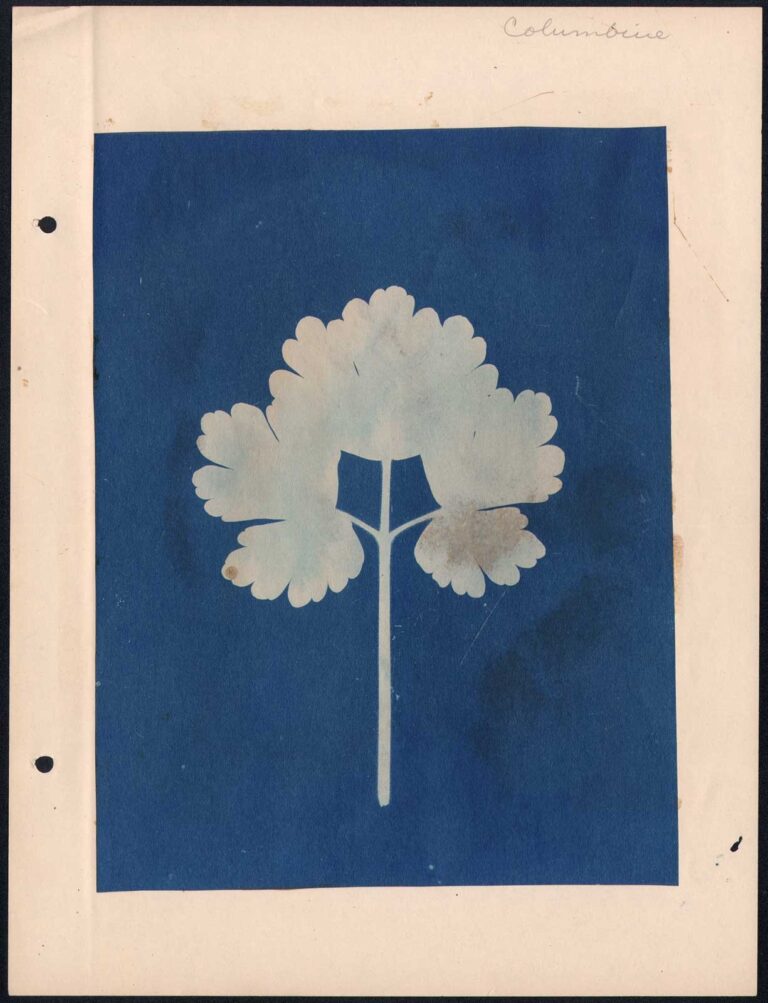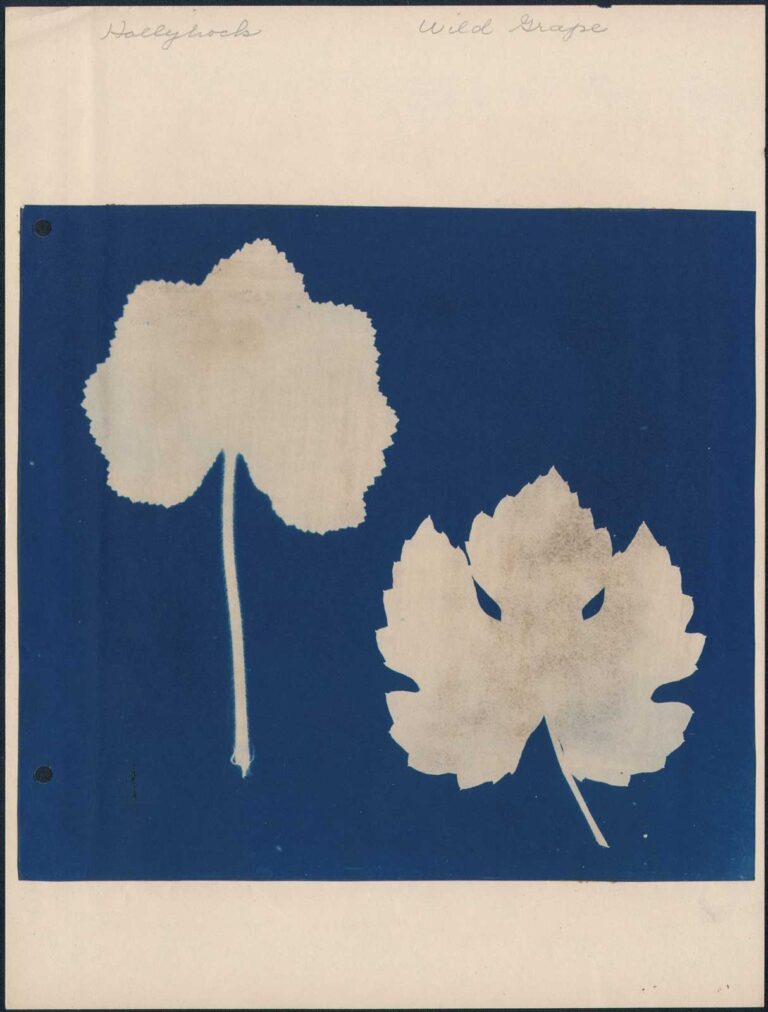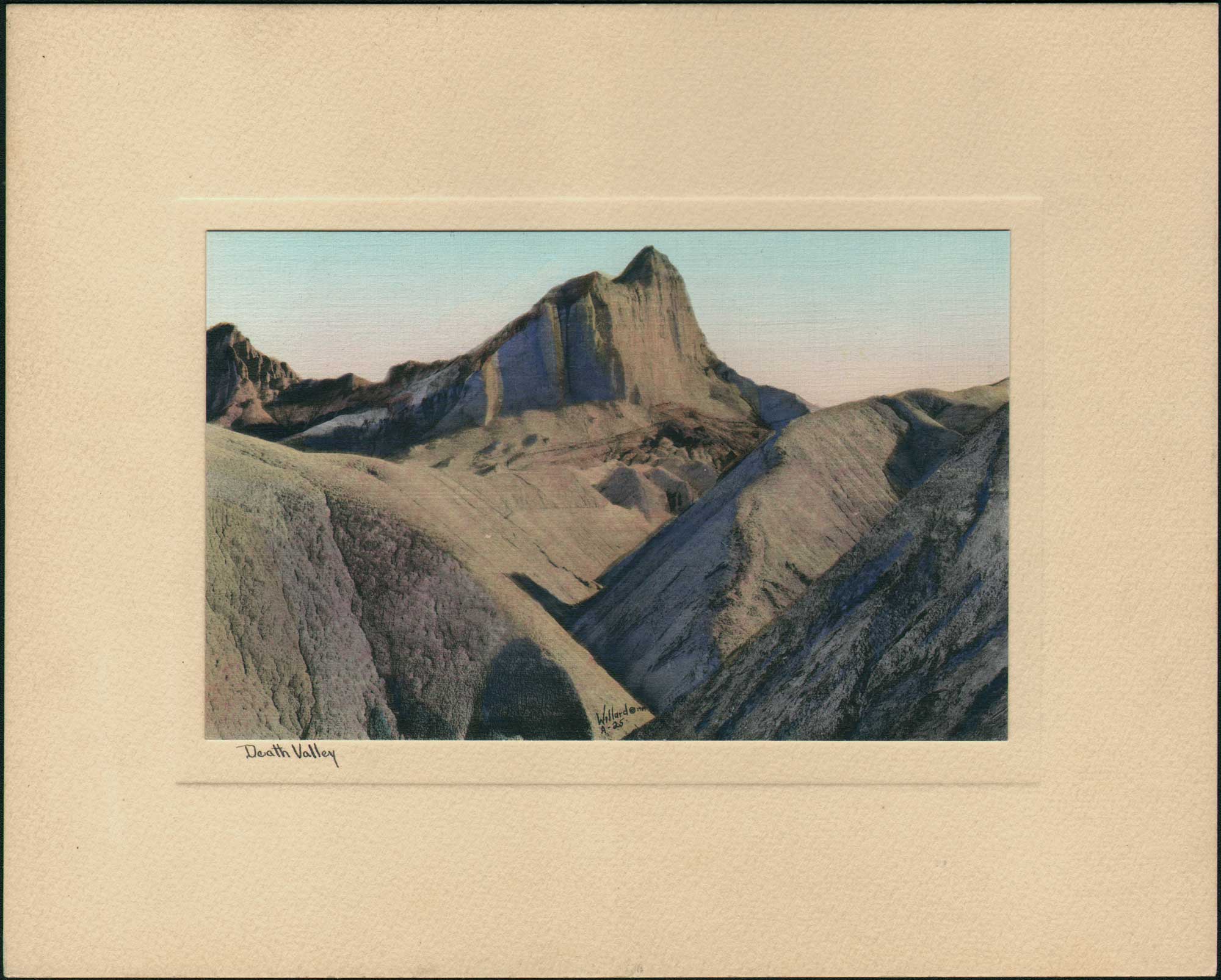
Death Valley
This hand-colored mounted photograph by Stephen H. Willard may have been taken in the 1920s and shows Manly Beacon at Death Valley National Park in California. The National Park Service describes it as “the most pronounced feature viewed from Zabriskie Point is Manly Beacon. This jutting high point rises to an elevation of 823 ft (251 m), and bears the name of one of the first 49ers (gold rush pioneers) to visit the area. Manly Beacon is especially magnificent when viewed at sunrise or sunset.”
Willard’s work in the 1920’s and 1930’s helped in the establishment of the Death Valley National Monument by President Hoover in 1933, The Joshua Tree National Monument in 1936, and The Kings Canyon National Park in 1940. ⎯Palm Springs Historical Society
Stephen Hallet Willard (1894-1966)
Stephen Hallet Willard (1894-1966) was born in Illinois and grew up in Corona California. He photographed the deserts and mountains of the West for 58 years. His mastery of the black and white photograph, combined with his passion for the landscape, translates into a body of work documenting remote areas of the West few Americans had seen or visited, yet he remains largely unknown. By the time Willard graduated from Corona High School in 1912, he had developed the skills needed for a career in photography. During the next few years, he made several important photographic trips through the wilderness areas of the Sierra Nevada. In 1921, Willard married Beatrice Armstrong, and after a year of traveling and photographing the deserts of the Southwest, they settled permanently in Palm Springs and opened a studio and gallery. For the next twenty-five years he traveled throughout the Colorado and Mojave Deserts and developed a passion for photographing the desert. To escape the summer heat, he and his wife established a second gallery in Mammoth Lakes and seasonally worked in both locations photographing the mountains in the summer and the desert in the winter. Willard regarded photography as a fine art and himself as an artist. His choice of subjects, composition, and use of sharp contrasts combine to make his photographs not only valuable artistic masterpieces but also a historic record of the desert and mountain environments. ⎯ biography: Palm Springs (CA) Art Museum Collection #54-1999
The years from 1900 to 1940 were the golden age of hand-painted photography, and was done primarily with translucent water-based tinting pigments. During it’s peak period from 1915 to 1925, hand-painted photography was a popular choice among the middle class for gifts or memories of family vacations.
Willard began hand-tinting select images early in his career, but went on to develop and master his own unique process that combined the artistry of photography with the freedom of Impressionist painting by the addition of opaque oil based media.
Willard’s mixture of black and white photography with his experimental use of both translucent and opaque colored media added texture and hues that illuminated the scenes – and portrayed them with realism and beauty in an eye-pleasing manner that is unique to his work. – The Stephen H. Willard Story: Richard J. Westman for The Historic Willard Studio at The Gallery at Twin Lakes
Published: 1930s era postcard made of this image titled on recto Death Valley National Monument : Manly’s Beacon, Golden Canyon with verso copy reading: MANLY’S BEACON, GOLDEN CANYON, NEAR FURNACE CREEK INN, DEATH VALLEY, CALIFORNIA: In this canyon of surprises are found some of the most astounding formations. The walls and mountains are absolutely desolate, the only living thing to be found is sparse desert holly on the canyon floor. The walls blend from white into yellow, pink and red.; © Willard ⎯Published By Stephen H. Willard, Palm Springs, California; “C.T. Photo Colorit”. Made Only By Curt Teich & Co., Inc., Chicago, U.S.A. (Colorit cards featured a deckle edge and was a five-color process made on linen finish stock from a black and white photo)
